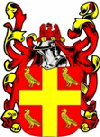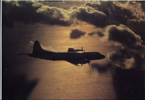ChezDaJez
Posts: 3436
Joined: 11/12/2004
From: Chehalis, WA
Status: offline

|
quote:
... that is, Frank does not say with a shorter round trip the Japanese certainly would have won the air campaign.
No, he doesn't say that because, no matter what, the Japanese could not afford a war of attrition which is essentially what Guadalcanal became. After October, the Allies were in a much better position to replace aircrews and planes, especially pilots. Frank, Lundstrom, Francillon and Bergerud all do say that Japanese pilot losses probably would not have been as great had they built airfields closer to the battle. In fact, Bergerud and Lundstrom both agree that one of the major Japanese faults was their failure to develop those airfields.
quote:
He wasn't writing that summary chapter in the context of "things that could have gone better for the Allies" ... like having sufficient warning via the radar and coastwatcher net that the F4Fs could typically obtain positional advantage. When it worked, the warnings turned one sided "attacker has initiative and positional advantage" affairs into, essentially, meeting engagements.
The Japanese were very predictable in their attacks and could be counted on to arrive over Guadalcanal near the noon hour. Radar and coastwatcher warnings allowed allied aircraft to stay on the ground until the last minute but the allies always had a reasonable idea of the Japanese time of arrival overhead without them. Towards the end of December 1942, the Japanese shifted their attacks towards late afternoon but their operational losses went up as they attempted to return to their bases at night amidst the mountainous terrain.
The survival advantage always goes to the defender. If forced to bail out, US pilots had a substantially better chance of rescue than did Japanese pilots. American search and rescue efforts were much better organized. The US (and the Allies in general) put a great deal of effort into recovering downed pilots. The Japanese, on the other hand, paid little more than token attention to it. Unless he was fortunate enough to come down near a Japanese base, a downed Japanese pilot had little, in any, chance of rescue. Most Japanese fighters either didn't have radios or they didn't work so, in most cases, weren't able to broadcast their location for a rescue effort. And as the battle wore on, the waters around Guadalacanal and the southern Slot simply became too dangerous for Japanese flying boats or ships to operate in.
Chez
< Message edited by ChezDaJez -- 9/20/2005 7:04:30 AM >
_____________________________
Ret Navy AWCS (1972-1998)
VP-5, Jacksonville, Fl 1973-78
ASW Ops Center, Rota, Spain 1978-81
VP-40, Mt View, Ca 1981-87
Patrol Wing 10, Mt View, CA 1987-90
ASW Ops Center, Adak, Ak 1990-92
NRD Seattle 1992-96
VP-46, Whidbey Isl, Wa 1996-98
|
 Printable Version
Printable Version










 (sorry, couldn't resist
(sorry, couldn't resist )
) 





 New Messages
New Messages No New Messages
No New Messages Hot Topic w/ New Messages
Hot Topic w/ New Messages Hot Topic w/o New Messages
Hot Topic w/o New Messages Locked w/ New Messages
Locked w/ New Messages Locked w/o New Messages
Locked w/o New Messages Post New Thread
Post New Thread